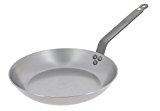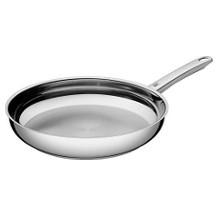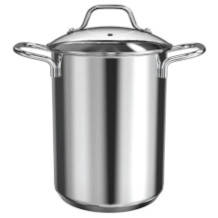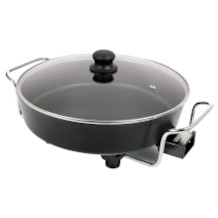Dutch oven purchasing advice: how to choose the right product
- What You Need to Know
- Dutch ovens can be used both outdoors and indoors and are suitable for cooking, roasting, baking, deep-frying and braising.
- Glowing coals or briquettes are placed on the lid so that the cast iron pot is heated evenly.
- Before using the Dutch Oven for the first time, it must be baked.
- A Dutch Oven should only be cleaned with hot water, otherwise the patina will be damaged.
Dutch Oven: the timeless all-in-one
If you take a closer look at the pot’s properties, you will immediately notice why the Dutch Oven is so popular for outdoor cooking. It is very robust, heat-conducting and, above all, heat-resistant. Traditionally, the cast-iron pot has three legs, which makes it stable even on uneven surfaces, unlike four legs. Its lid is flat and has a raised rim so that glowing coals can be placed on top. This allows the heat to be distributed evenly. This makes the Dutch Oven suitable for cooking, roasting and even baking. It is therefore an all-rounder for the campfire. Combined with its durability, the Dutch Oven is ideal for long journeys through the wilderness or simply for the garden. Its versatility also gives it a firm footing in the 21st century.
Dutch Oven, Chuck Wagon Oven, Camp Oven, Potje or simply Dopf – there are many names for the thick-walled cast iron pot and its history reveals the reason. At the beginning of the 18th century, Abraham Darby brought the Dutch production process for cast iron to England and at that time already called the pot made with it “Dutch Oven”. The Dutch Oven was widely used in the British colonies such as Australia and South Africa. However, it was most popular in the USA in the 19th century, as the pot is perfect for outdoor cooking. Many Americans still associate the Dutch Oven with romantic notions of the natural way of life of the first settlers in the West.
Dutch Baby in the Dutch Oven?
In addition to its origins, the name “Dutch Oven” brings up another important question: can you bake a Dutch Baby in the Dutch Oven? As long as you have a cast-iron pan with a removable handle that fits in the Dutch Oven, there is nothing to stop you. After all, a Dutch Baby is nothing more than an oven pancake.
How the Dutch Oven burns in works
Burning in the Dutch Oven is a prerequisite for its use. The patina is formed during the baking process. This is a layer of fat that prevents the food from burning. Some Dutch ovens can be bought already burnt in. Otherwise, you have to do it yourself. The process is relatively uncomplicated:
Clean
Dutch ovens usually come with an anti-rust coating. Clean the pot with water and washing-up liquid to remove this. After the Dutch Oven has dried, the baking process can begin.
Oiling
Oil the inside of the pot including the lid with cooking oil. It is recommended to use a high-heat oil for this, for example sunflower oil. If a little oil collects on the bottom, you should dab it off with kitchen paper.
Baking
Place the Dutch Oven on the fire or grill with the opening facing downwards. You can place the lid on the three legs. When you burn the pot in the oven, the opening should be facing upwards. The lid must then be burnt in separately.
Remove from the heat source
After about one hour at a minimum temperature of 200 degrees Celsius, you can remove the Dutch Oven from the heat source. The interior should be covered with a matt, deep black layer. This means that the heat has successfully turned the oil into patina.
Cool down
Let the Dutch Oven cool down. Now you can use it to prepare delicious dishes.
Tips for using the Dutch Oven
It is true that the cast-iron pot is in itself a very robust, resilient utensil. Nevertheless, there are some tips you can use not only to ensure its longevity but also to discover its versatility.
Heat evenly
Because a Dutch Oven can be heated evenly, it can also be used as an oven. Thanks to its flat lid with the raised rim, glowing pieces of coal or briquettes can be placed on top. In this way, the pot is heated from above and below, which allows the food to be cooked evenly.
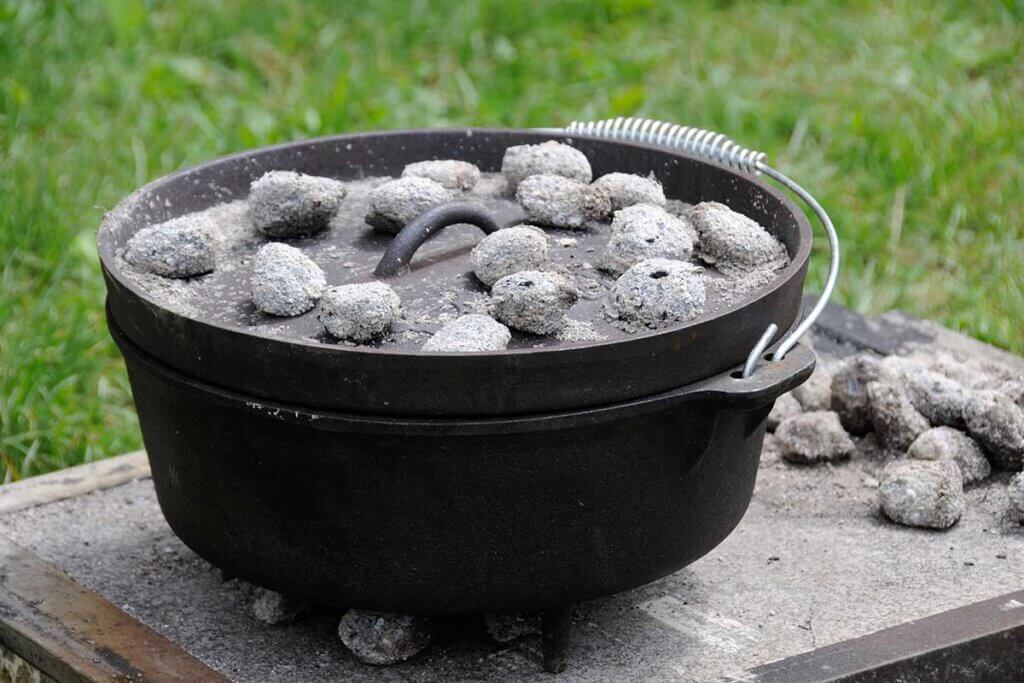
Exercise patience
Patience is also an important virtue when steaming. Thanks to its material, the Dutch Oven heats up relatively quickly. However, it is usually used to cook food for several people. Cooking such quantities usually takes some time. Resist the impulse to constantly remove the lid to follow the cooking process or to sniff the food. This way, the valuable steam escapes from the pot and there is a risk that your dish will turn out too dry. In addition, the temperature in the pot drops.
The versatile lid
The lid of the Dutch Oven does not only need to be oiled for a uniform appearance. It can also be used separately from the Dutch Oven as a pan. You can simply place it on the embers or the grill. Thanks to the patina, it does not need to be oiled. However, be careful when you take the lid off the fire, because it gets very hot.
The place of use
A Dutch oven with three legs is mainly used outside. There it can be placed directly on the embers or the barbecue. If you want to use your pot in the kitchen, you should choose a model without legs. This can also be heated on the cooker or in the oven.
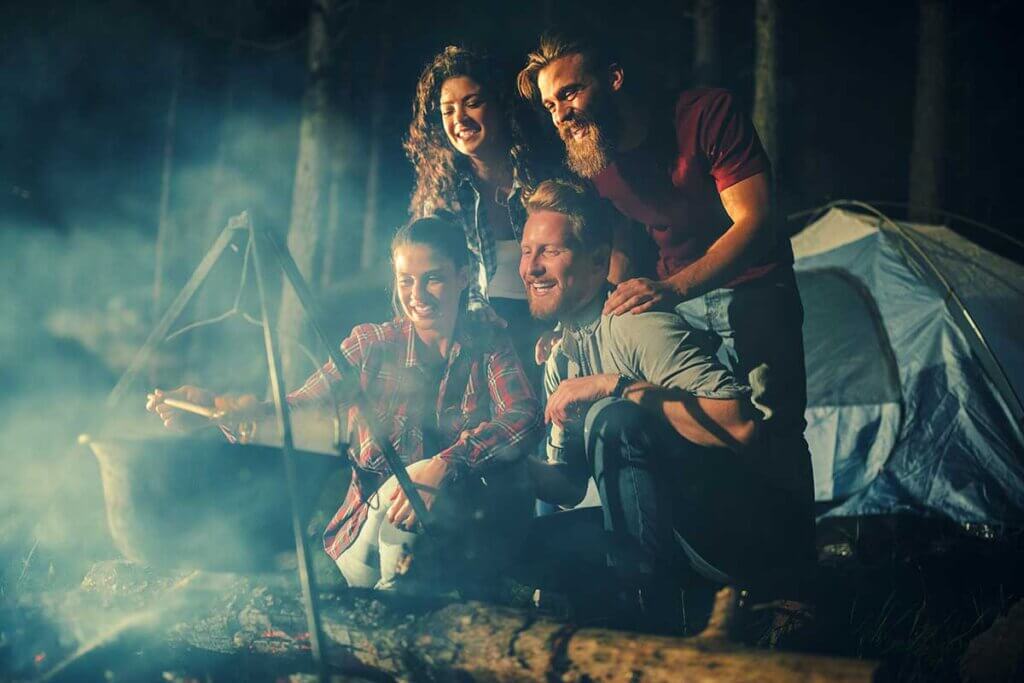
The cooking temperature
The ideal temperature varies depending on the dish, the size of the cast iron pot and the manufacturer’s specifications. Most manufacturers specify how many briquettes or pieces of coal you should use. Stick to this recommendation. If you heat the pot more, it will probably go faster, but you may end up with a pot of burnt food and leave your guests hungry.
Cold and hot: a bad combination
On the one hand, the cast-iron pot is very robust and can withstand a lot. On the other hand, even it has to bow to physical processes. So you should avoid pouring cold liquids into the hot Dutch Oven. The stresses that this creates in the material could cause it to crack.
Protect the patina
When using the Dutch Oven for the first time, you should not prepare highly acidic foods such as tomato sauce. This would damage the patina of the Dutch Oven. However, as it improves with each use, it will resist such foods later on.
Caution, hot!
The Dutch oven heats up a lot during use. Accordingly, it needs a little time to cool down again. In the meantime, only touch the pot with fireproof gloves, fire tongs or the lid lifter.
The most important buying criteria
In principle, the Dutch oven is a very simple utensil. Nevertheless, you should pay attention to some criteria when buying, which influence the selection of the right pot.
The type of Dutch Oven
The traditional Dutch Oven has three legs. Thanks to these, it can be placed on the embers and heats up quickly. Its flat lid allows you to place the charcoal or briquettes on it to heat the Camp Oven evenly. In addition, the lid usually also has three legs that come into play when it is used as a pan. For buyers who use the Dutch Oven exclusively for camping or simply in the garden, this version of the Dutch Oven is ideal. If you want to cook with it in the kitchen, you should choose a Dutch Oven without legs. The traditional pot can neither be heated on the cooker, as the contact surface is missing, nor in the oven, as its legs often make it too big.
A Dutch oven without legs can even be heated on induction cookers. However, this is not only to be understood as an indoor pot. It can also be used outdoors. To do this, you need a stand, which is often supplied with the purchase. Alternatively, you can hang the Dutch Oven over the fireplace.
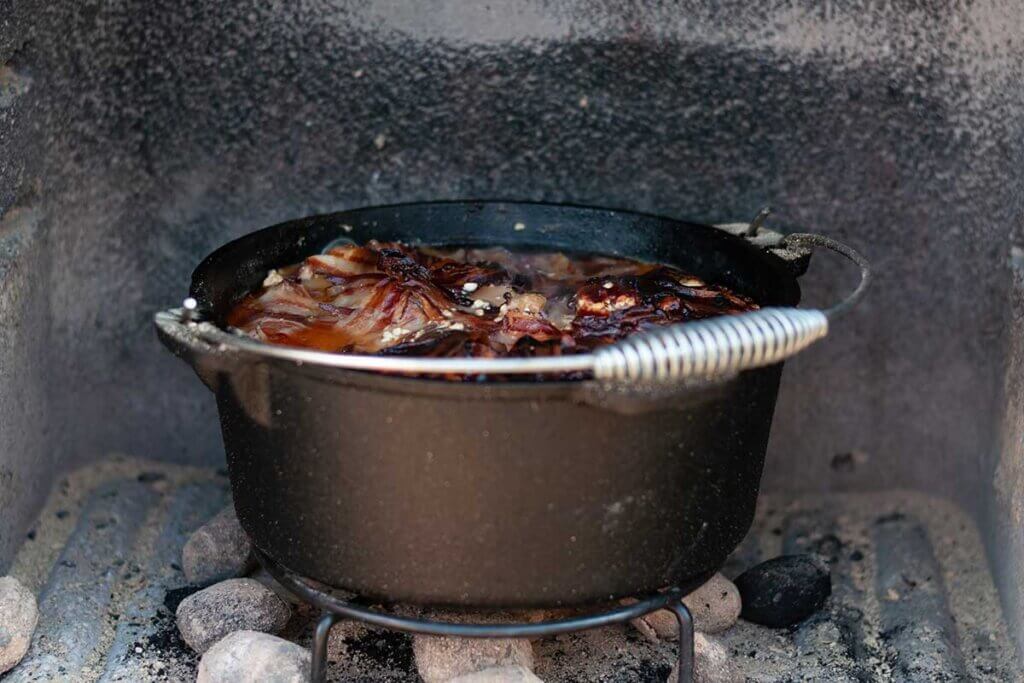
Dutch ovens are usually round. Some manufacturers also produce rectangular models, which usually have no legs. Dutch ovens fit better in the oven in this shape. Apart from that, they have neither advantages nor disadvantages compared to round models.
The size
A large Dutch oven takes too long if you are cooking for two people only. A small one, on the other hand, is not enough to fill a large group. Accordingly, you should pay attention to the capacity when buying. This is usually stated in litres. Especially for models from the United States, quarts are also used. One litre corresponds to about 1.07 quarts. So the difference is relatively small. You can estimate the appropriate size by first defining how many people you want to cook for. The number of litres corresponds more or less to the number of people it can cook for. So you should reckon with about one litre per person.
You should also bear in mind that cast iron is very heavy. A large Dutch oven is therefore somewhat heavier to handle. This is even more the case when it is full of food. If you are cooking for many guests, you will have to lift several kilograms several times.
The material
Dutch ovens are made of cast iron. No other material should be considered. Nevertheless, not all ovens are the same. When choosing a Dutch oven, make sure that it has the same thickness all over. Otherwise there is a risk that it will be heated unevenly. This nullifies its greatest advantage. It is also worth taking a quick look at the legs and handles of the Oven. If they are too thin, they could break off at high temperatures, even if they are made of cast iron.
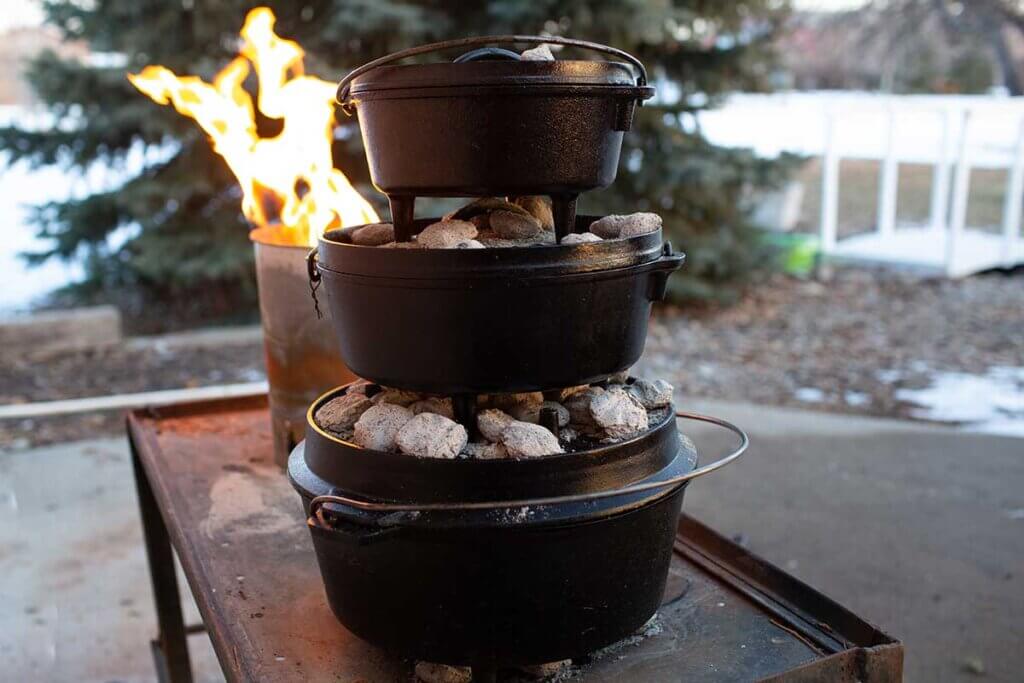
The accessories
Dutch ovens do not usually include many accessories when you buy them. Usually there is a bag to make transport easier and a lid lifter to lift the hot lid. Rarely are Dutch ovens available with a thermometer insert. Pots without legs usually come with a rack for cooking on the embers.

There are also some utensils that make handling the Dutch Oven easier and safer. These include fireproof gloves that you can use to move the hot pot or lift the lid. Fire tongs are also an advantage. With these, you can place the embers or briquettes exactly where you need them to heat the Dutch Oven evenly.
The price
Features such as the size, the quality of workmanship and the manufacturer are decisive for the price of a Dutch Oven. The cost is usually between 40 and 180 euros. Models that meet the most important purchase criteria are available for as little as 40 euros. There are also Dutch ovens for as little as 20 euros. However, the quality of workmanship is often poor. The best-known manufacturers include Petromax, Big BBQ, Camp Chef and BBQ-Toro. Their products are in the higher price range. On the other hand, they usually have the best ratings.
Cleaning, maintenance and storage: What should be considered?
Cast iron is a very durable material. Your Dutch Oven can therefore give you many years of pleasure. However, the prerequisite for this is that you treat and care for it properly.
Care
One of the most important aspects of the pot is its patina. Ideally, you should oil the interior a little after each use. This will strengthen the patina with each use. If at some point it is partially or completely damaged, the Dutch Oven should be re-baked before the next use.
Cleaning
The most important note on cleaning is that no washing-up liquid should be used. It can damage the patina and leaves an unpleasant taste. Instead, you should use hot water. Let the remains soak in it. When the water has cooled down, you can simply clean the pot with a wooden scraper and a sponge.
Storage
The Dutch Oven is best stored in a dry place. Permanent moisture can cause it to start rusting. In addition, the cast iron pot should not be stored with the lid closed. It is important to ensure good air circulation. For example, you can wedge some folded kitchen paper between the lid and the pot. As the Dutch Oven is not cleaned with washing-up liquid, oil residues remain in the pot. These become part of the patina. If the air cannot circulate, there is a risk that the oil will go rancid. In this case, the Dutch Oven must be re-baked.

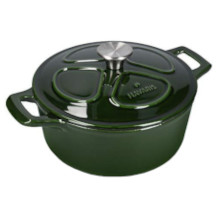
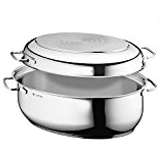
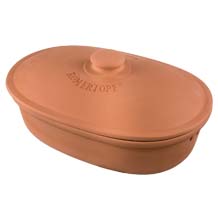
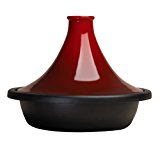

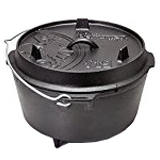

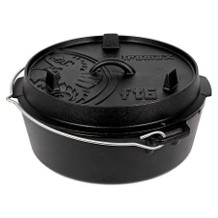
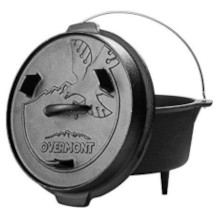
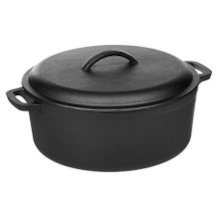
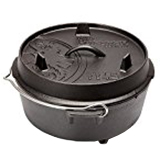

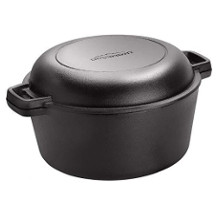
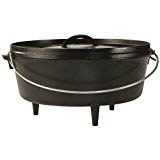
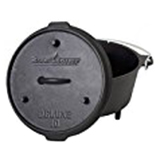
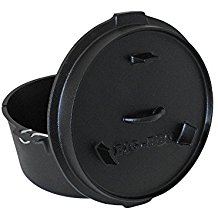
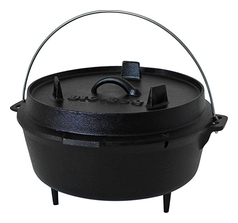
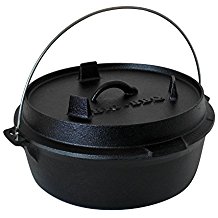
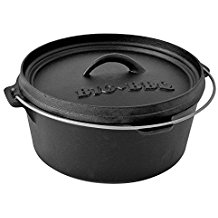
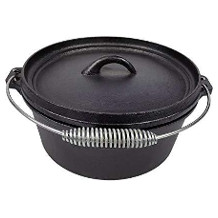
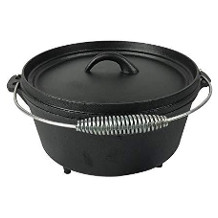


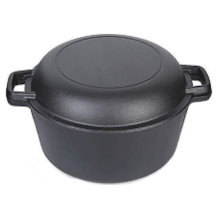

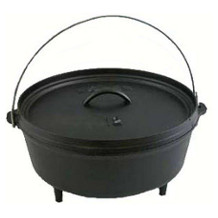

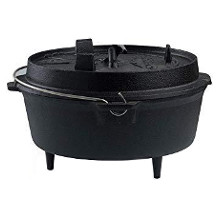

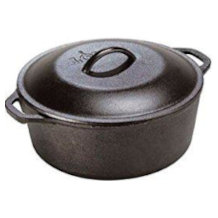


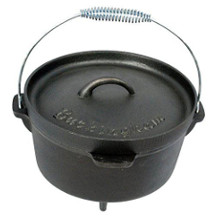
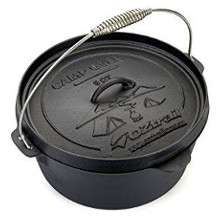

 1,946 reviews
1,946 reviews


